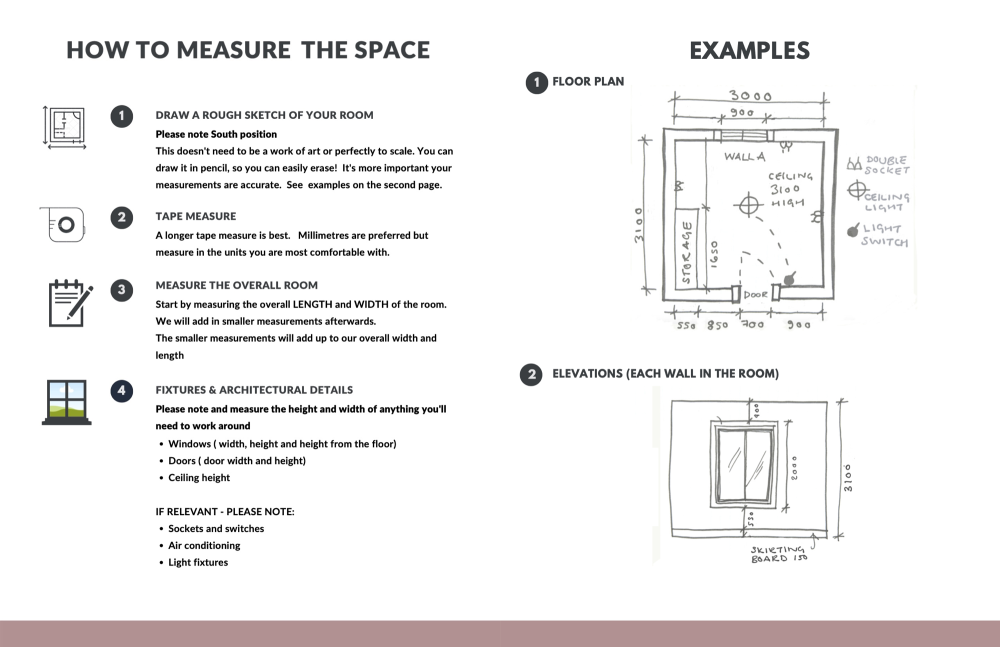The importance of a furniture layout
Posted on

I hope the list of decisions needed for a project that I gave last week helped you to visualise all the decisions to make on your project. It might feel a bit overwhelming but great to see them listed and I hope it prompts you.
The other hugely vital point was the importance of a furniture layout. If you put the effort into designing out mistakes at the drawing stage it will save you money and wasted time - and will be so much less stressful.
Measure your space as accurately as you can. I have a guide that will help you which you can download here. Measure the floor area and doors & windows. Get the wall areas in between windows measured correctly. Add socket, switch and lighting positions. Draw all this on grid paper. Measure any fixed items such as fireplace and add. Measure items of furniture you’d like to go in the space - whether existing or new. You could draw the footprint of these items and cut them out so you can play around with options. Or overlay a sheet of tracing paper. If you are introducing only a few new items into the space - then use newspaper or cupboard and measure out the exact space. Seeing the space in 3 dimensions early on will help you to feel more sure about the work. If you are drawing the floor plan - have a look at elevations where things are happening on walls - check they work in relation to each other.
It doesn’t matter how you do it - use the method which works best for you.
- How is the flow/circulation through the space?
- How is the view into the space from the adjoining space?
- Are you making the most of any nice views outside and maximising daylight?
Are you looking at large items in your design?
-
Look at whether they are delivered in one piece or not
-
Look at your door sizes (including the front door)
-
Look at the hallways, staircases and any turns need to get the item into the room
Please do this before going too far with your design and DEFINATELY before you order! We want to design out mistakes!
Now look at your furniture layout in conjunction to existing sockets, switches and lighting.
Is everything easy to access? Are any sockets covered up that need repositioning or new sockets adding? Is the lighting going to light the right areas or do you need a rethink? Would the space benefit from some different types of lighting with this new arrangement. How often do you use the central pendant light? Could you use layered, low level lighting instead - table lamps?
- Can you still reach the window to pull down blinds/drawer curtains?
- Is any heating clear of obstructions? Have ugly radiators appeared that now need addressing?
- Imagine using the space. Have you got enough storage for real life living? Can you factor in anything that will improve the day to day use of the space?
- Have you had a rethink about a new item? Update the drawing just to be sure of the fit.
I can’t stress how important this is to do if you want to plan the project well. You will thank me for encouraging you! It’s good to know any knock on effects early on as it all affects budget and we all know that’s when it becomes stressful. I really hope this helps you!
Can you see parts of the process you’d like to do yourself and other parts you really don’t want to do?
That’s where I can help. I can help you on the parts you need help with.
A TWO HOUR CONSULTATION can happen in-person (in Brighton & Hove area) or online.
In addition to two hour consultations - time can be pre-purchased in 10 hour or 20 hour blocks.
